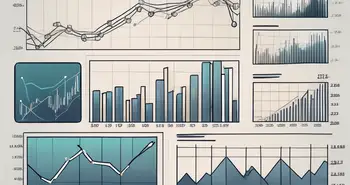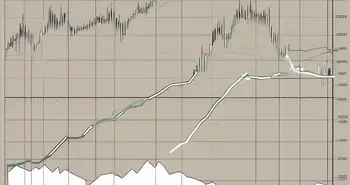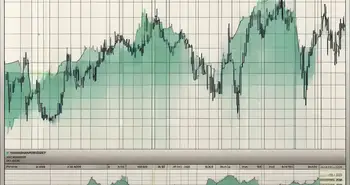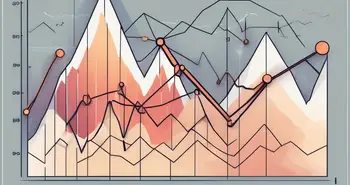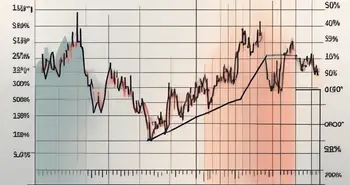Understanding the Coppock Indicator: A Comprehensive Guide
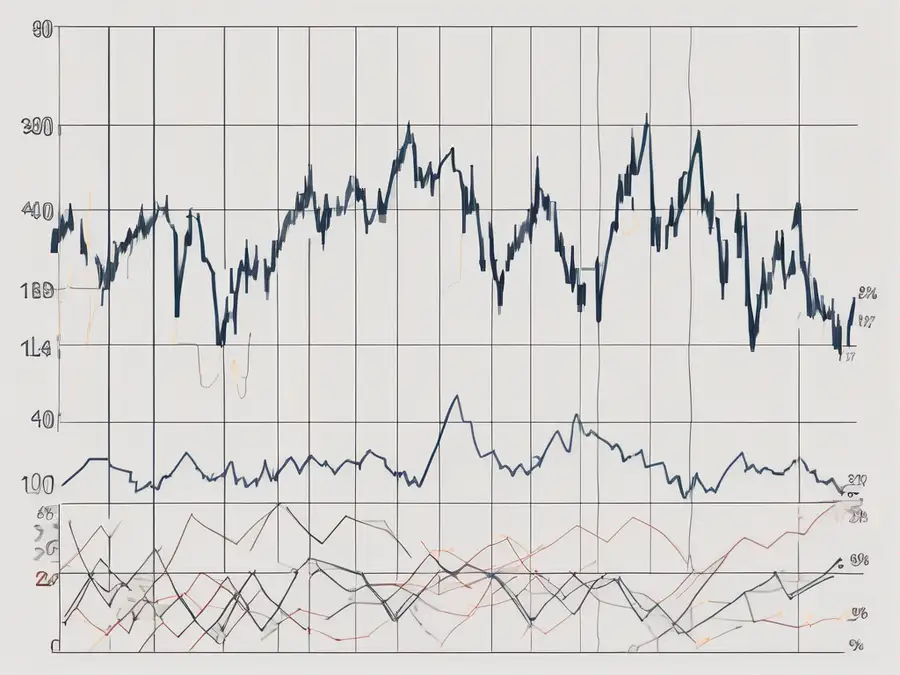
As an experienced trader and technical analyst, I am excited to share with you my comprehensive guide on understanding the Coppock Indicator. In this article, we will delve into the history, mathematics, significance, interpretation, and strategies for using this powerful tool in your trading arsenal. So strap in and let’s explore the world of the Coppock Indicator!
What is the Coppock Indicator?
The Coppock Indicator is a momentum oscillator that helps identify major turning points in the stock market. Named after its creator, Edwin Coppock, this indicator combines multiple time periods to generate buy and sell signals. By calculating the rate of change between two moving averages, the Coppock Indicator provides traders with valuable insights into market trends and potential reversals.
The History of the Coppock Indicator
Developed in the 1960s, Edwin Coppock was searching for a reliable method to identify long-term buying opportunities in the stock market. He believed that by analyzing economic data and using a momentum oscillator, traders could navigate the volatile market with greater precision. The Coppock Indicator has since stood the test of time and become a popular tool among technical analysts.
During the development of the Coppock Indicator, Edwin Coppock extensively studied historical market data and economic indicators. He analyzed various cycles and patterns to understand the underlying dynamics of the stock market. Through his research, Coppock discovered that markets tend to move in cycles, alternating between periods of expansion and contraction.
By observing these cycles, Coppock realized that significant market bottoms often signaled the start of a new upward trend. He wanted to create an indicator that could accurately identify these turning points and provide traders with actionable insights. This led him to develop the Coppock Indicator, which became a valuable tool for investors seeking to capitalize on favorable buying opportunities.
Basic Principles of the Coppock Indicator
The Coppock Indicator operates on the belief that markets move in cycles, alternating between periods of expansion and contraction. This indicator aims to capture the long-term trend while filtering out short-term noise. By identifying significant market bottoms, the Coppock Indicator assists traders in capitalizing on favorable buying opportunities.
To calculate the Coppock Indicator, Edwin Coppock used a combination of two moving averages. The first moving average represents a longer-term trend, typically spanning several months, while the second moving average captures a shorter-term trend, usually around 11 to 14 months. By comparing the rate of change between these two moving averages, the Coppock Indicator generates buy and sell signals.
When the Coppock Indicator crosses above zero, it generates a buy signal, indicating that the market may be entering a new bullish phase. Conversely, when the indicator crosses below zero, it generates a sell signal, suggesting a potential bearish trend. Traders often use these signals in conjunction with other technical analysis tools to confirm their trading decisions.
While the Coppock Indicator is primarily used for long-term analysis, it can also be applied to shorter timeframes. Traders can adjust the length of the moving averages to suit their trading style and time horizon. However, it is important to note that the Coppock Indicator is not infallible and should be used in conjunction with other indicators and analysis techniques to make well-informed trading decisions.
The Mathematics Behind the Coppock Indicator
To calculate the Coppock Indicator, we need to consider three key components: the rate of change (ROC), the long-term moving average (MA1), and the short-term moving average (MA2). These elements work together to generate a composite measure of momentum and help determine market direction.
Calculating the Coppock Indicator
To calculate the Coppock Indicator, we first calculate the ROC between MA1 and MA2. Next, we smooth the ROC using a weighted moving average. This smoothed ROC, known as the Coppock Curve, is then used to generate buy and sell signals. Traders typically look for positive divergences and crossovers to confirm their trading decisions.
Understanding the Coppock Curve
The Coppock Curve, derived from the smoothed ROC, visually represents the momentum of the market. When the Coppock Curve rises above zero, it indicates bullish momentum, suggesting a potential buying opportunity. Conversely, when the Coppock Curve dips below zero, it signals bearish momentum, cautioning traders to consider selling or shorting.
The Significance of the Coppock Indicator in Trading
The Coppock Indicator has proven to be a valuable tool for traders seeking to identify market bottoms and potential long-term investment opportunities. Let's explore two key areas where the Coppock Indicator shines: identifying market bottoms and its role in long-term investments.
Identifying Market Bottoms with the Coppock Indicator
Market bottoms are a critical turning point for traders, signaling the end of a downtrend and the beginning of an uptrend. The Coppock Indicator excels at identifying these pivotal moments by pinpointing areas of positive momentum after a prolonged decline. When the indicator rises from negative to positive territory, it provides a strong confirmation of a market bottom.
The Role of the Coppock Indicator in Long-Term Investments
Long-term investors also benefit from the Coppock Indicator, as it helps identify opportunities for accumulating assets at favorable prices. By considering the long-term trends indicated by the Coppock Indicator, investors can make informed decisions on when to allocate capital into the market.
Interpreting the Coppock Indicator
Interpreting the Coppock Indicator signals is crucial to successfully implementing this tool in your trading strategy. Let's delve into how to read and interpret the signals provided by the Coppock Indicator, as well as its limitations.
Reading the Coppock Indicator Signals
When the Coppock Curve crosses above zero, it generates a bullish signal, indicating a potential buying opportunity. On the other hand, when the Coppock Curve crosses below zero, it generates a bearish signal, suggesting a potential selling or shorting opportunity. Additionally, traders often pay attention to divergences between the Coppock Indicator and price, which can offer valuable insights into market trends.
The Limitations of the Coppock Indicator
While the Coppock Indicator is a powerful tool, it is not infallible. Like any technical indicator, it is not foolproof, and false signals can occur. Therefore, it is crucial to use the Coppock Indicator in conjunction with other technical analysis tools and indicators to confirm signals and increase overall accuracy.
Strategies for Using the Coppock Indicator
Now that we understand the concepts behind the Coppock Indicator, let's explore some strategies for effectively utilizing this tool in your trading endeavors.
Combining the Coppock Indicator with Other Technical Analysis Tools
To enhance the accuracy of your trading decisions, consider combining the Coppock Indicator with other technical analysis tools. Moving averages, trendlines, and support and resistance levels can provide additional confirmation and support for your trading strategies.
Adjusting the Coppock Indicator for Different Market Conditions
Market conditions can vary greatly, from trending markets to range-bound markets. To adapt to different environments, traders can adjust the parameters of the Coppock Indicator to optimize its performance. Experimenting with shorter or longer moving averages can help align the indicator with the current market conditions.
Throughout my trading career, the Coppock Indicator has been an invaluable tool in my decision-making process. One piece of advice I can offer is to practice patience and discipline when utilizing this indicator. As with any trading strategy, it is essential to thoroughly backtest and validate your approach before implementing it with real money.
Frequently Asked Questions (FAQ)
- What is the function of the Coppock Indicator?
- How is the Coppock Curve calculated?
- What are the limitations of the Coppock Indicator?
- How can I use the Coppock Indicator effectively?
The Coppock Indicator helps identify major market bottoms and provides traders with buy and sell signals.
The Coppock Curve is calculated by smoothing the rate of change (ROC) between two moving averages.
While powerful, the Coppock Indicator is not infallible and can generate false signals. It is recommended to use it in conjunction with other technical analysis tools for confirmation.
Combining the Coppock Indicator with other technical analysis tools and adapting its parameters to different market conditions can enhance its effectiveness.
Now armed with a comprehensive understanding of the Coppock Indicator, you are equipped to incorporate this powerful tool into your trading strategy. Remember, practice and refinement are key to mastering any indicator. Happy trading, and may the Coppock Indicator guide you to profitable opportunities!
Ready to take your trading to the next level with the Coppock Indicator and beyond? Discover Morpher, the revolutionary trading platform that harnesses blockchain technology to offer zero fees, infinite liquidity, and a multitude of unique trading opportunities. Whether you're interested in stocks, cryptocurrencies, or even niche markets like NFTs, Morpher provides the tools you need, including fractional investing, short selling without interest fees, and up to 10x leverage. Experience the future of investing with the safety and control of the Morpher Wallet. Sign Up and Get Your Free Sign Up Bonus today, and join the community of traders who are already transforming the way they invest with Morpher.

Disclaimer: All investments involve risk, and the past performance of a security, industry, sector, market, financial product, trading strategy, or individual’s trading does not guarantee future results or returns. Investors are fully responsible for any investment decisions they make. Such decisions should be based solely on an evaluation of their financial circumstances, investment objectives, risk tolerance, and liquidity needs. This post does not constitute investment advice.

Painless trading for everyone
Hundreds of markets all in one place - Apple, Bitcoin, Gold, Watches, NFTs, Sneakers and so much more.

Painless trading for everyone
Hundreds of markets all in one place - Apple, Bitcoin, Gold, Watches, NFTs, Sneakers and so much more.

